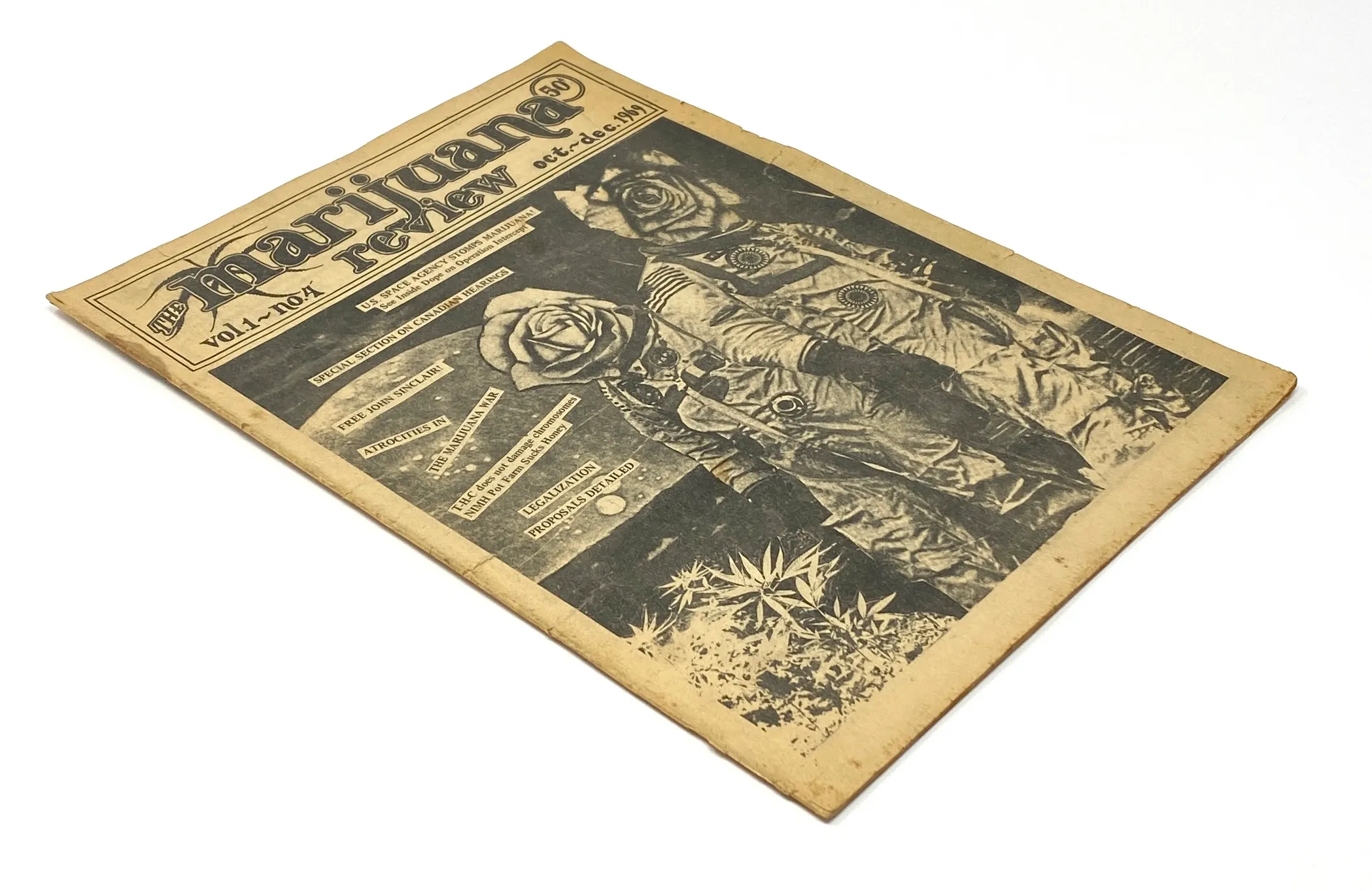

Cannabis use amongst Americans was pretty low in 1937, but that didn’t stop the United States Congress from passing a law prohibiting its consumption. Harry J. Anslinger and his Reefer Madness had transfixed the masses into a furor over Cannabis use and its threat to basic common decency. Outside of a few outspoken advocates (legendary Jazz Trumpeter Louis Armstrong comes to mind) there was neither the political nor social will to fight to challenge this misinformation. With World War II fast approaching, the prevailing winds were not going to change for another few decades.
Enter LeMar International
The Beat Generation of the late 1950s and early 1960s would come to take up the mantle of proud Cannabis use (along with legalization/advocacy) and run with it. Early members of this literary movement, like Allen Ginsberg (of Howl fame), Jack Kerouac (of On the Road fame) and William S. Burroughs (of Naked Lunch fame) utilized Cannabis as a tool to enhance their own creativity, artistry and productivity. Around 1964, Ginsberg and a few like minded individuals, took it a step further by forming LeMar International (LeMar for Legalize Marijuana) in New York City’s Lower East Side. This first-of-its-kind legalization advocacy group initially organized lightly-attended pro-marijuana marches throughout the city that were designed to bring Cannabis users out into the open, making the case that there was nothing at all wrong with safe, smart pot consumption. Six decades later, that message has remained fairly consistent.
Amorphia and The Marijuana Review
Buffalo’s connection to this movement has roots in 1967. A SUNY Buffalo PhD student, named Michael Aldrich, who had also served as an assistant to Allen Ginsberg, started the first college chapter of LeMar international. While at UB, Aldrich helped launch LeMar and America’s first cannabis culture and information magazine, The Marijuana Review, featuring information on legalization updates, advocacy campaigns, cannabis pricing, psychedelic imagery poetry, and much much more! The Marijuana Review was published until 1973, sold for 50 cents per issue and was available for subscription by mail. It also always featured a smattering of artwork from new and upcoming artists throughout each issue. As you flip through the 420 edition of CannaBuff, keep an eye out for some graphics drawn by our friend Seth Graham of Hidden Doorways Tattoo. In keeping with the spirit of The Marijuana Review, look for a lot more of this moving forward.
CannaBuff had laid claim to presenting Buffalo’s first Cannabis-themed magazine, however we have proven ourselves wrong. Little information is available about this locally-produced precursor to High Times, DOPE Magazine, and the like, outside of some minuscule information and imagery on the internet, but regardless, any Cannabis media company around today can directly trace their roots back to this groundbreaking magazine and group. Funny how there always seems to be a Buffalo connection.
In 1971, LeMar International and its cohorts decided to move west for warmer weather and more welcoming social norms. Aldrich and Ginsberg united LeMar with a newer advocacy group and launched what would be called Amorphia. In another act way ahead of its time, Amorphia funded their legalization efforts by selling Hemp-based rolling papers (the brand name was Acapulco Gold) across the country. Their aim was to raise funds for a media campaign across the country to combat misinformation, challenge various legislation and to promote legalization efforts wherever possible.
Amorphia Becomes NORML
By 1972, Amorphia was being challenged by another advocacy group gaining steam in Washington called the National Organization for the Reform of Marijuana Laws, better known as NORML. Very early on, both sides observed that direct competition would be detrimental to each’s efforts and ultimately to the cause at large. With the movement as nascent as it was, dividing funding and political capital into two competing organizations could have been a deathblow. Fortunately, both sides recognized this risk and very quickly broached the subject of a merger. Accelerating issues with funding at Amorphia (they had a hard time selling their hemp-based rolling papers, viewed as drug paraphernalia, to head shops at the time) ultimately became the catalyst for what would become Amorphia rolling into NORML as we know it today. The two largest Cannabis-legalization advocacy groups in the country became one, with offices and personnel spread across the entire country. This would be the initial foundation for a group that would fight for the next five decades for legalization. Most of us can plainly see the fruit of the labor of these past fifty-plus years.
Where Does It All Go From Here?
This current wave of legislation across the country, New York State included, may suggest headwinds for major Cannabis-advocacy groups like NORML. Consider more recent chatter surrounding federal legalization and one might begin to think their very existence may become threatened in short-order. It would seem more appropriate, from this author’s standpoint, that a tweak to the mission statement is an easier solution. NORML could choose to pivot their advocacy more towards Cannabis education, both around medical and adult-use; support for social justice and criminal justice initiatives; and even towards consumer and marketplace protection. All of these issues are only becoming more prominent and well-established organizations like NORML (and Cannabuff, duh) could easily play a hand in formulating these messages and continuing to champion their awareness.
Related: Are CBD Tinctures Old News?

